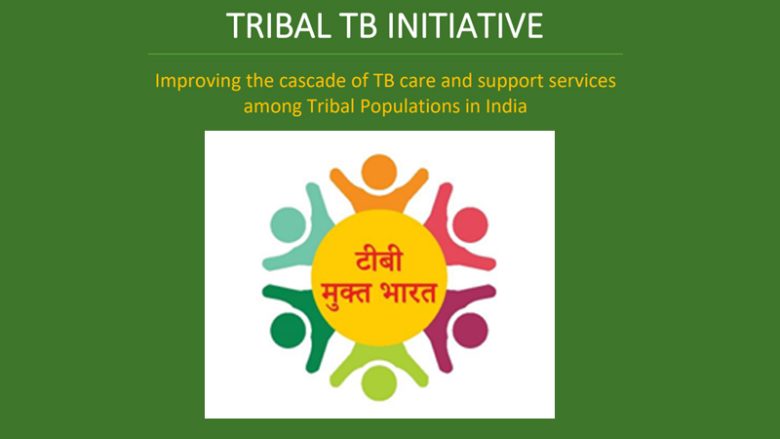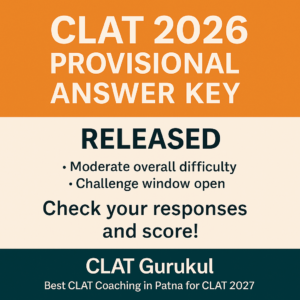
ICMR’s Push for Decentralised TB Testing
A Critical Public Health Shift – CLAT Current Affairs 2026
GK & Current Affairs for CLAT | CLAT Current Affairs 2026
Powered by CLAT Gurukul – Best online coaching for CLAT
Why in News?
On July 24, 2025, the Indian Council of Medical Research (ICMR) made a crucial update to its National List of Essential Diagnostics (NLED), including rapid TB (tuberculosis) diagnostic tests for use at primary healthcare levels such as sub-health centres (SHCs) and community clinics. This move aims at early detection and treatment of TB cases, especially asymptomatic or subclinical cases, which could help reduce India’s massive TB burden.
This major development in India’s public health policy holds importance for legal, constitutional, healthcare, and policy reasoning questions in CLAT 2026, especially under the themes of Right to Health, access to care, decentralization of services, and preventive medicine.
Introduction
India bears the highest burden of tuberculosis (TB) in the world, accounting for 27% of global TB cases, according to the World Health Organization (WHO). While treatment success has improved, the emergence of multi-drug resistant TB (MDR-TB) and undetected subclinical TB remain major challenges.
The ICMR’s recent update to its National List of Essential Diagnostics (NLED) is a strategic intervention to push TB diagnostic testing down to the lowest rungs of the healthcare system. It promotes early screening at sub-health centres (SHCs) and primary health centres (PHCs) using molecular testing and TB skin tests. This decentralised approach can significantly break the chain of transmission by catching TB early — even before symptoms show.
For CLAT aspirants, this topic is essential in understanding how public health intersects with law and policy, especially in contexts like the Right to Life (Article 21) and Directive Principles of State Policy (DPSP – Article 47: Duty of the State to raise nutrition and public health).
Point-wise Summary
🔹 1. ICMR’s Updated Diagnostic List
- ICMR has revised the National List of Essential Diagnostics (NLED) to include:
- Rapid testing for sickle cell anaemia, thalassemia, hepatitis B, syphilis, and especially,
- Molecular and skin tests for tuberculosis (TB).
- This update aims to make diagnostics accessible at the grassroots level—SHCs, CHCs, and PHCs.
🔹 2. Importance of Early TB Detection
- Early TB diagnosis helps:
- Identify asymptomatic individuals.
- Prevent spread before symptoms like cough, fever, or weight loss appear.
- Detect latent and subclinical TB cases.
- The strategy recommends collecting samples at SHCs and conducting TB skin tests at the community level.
🔹 3. WHO Data on India’s TB Progress
- Since 2015, India has:
- Reduced TB cases by 17%.
- Reduced TB-related deaths by 20%.
- 85% of detected cases have received treatment, indicating effective implementation.
- However, India still contributes the largest share (27%) of TB globally.
🔹 4. Subclinical TB: The Hidden Threat
- Subclinical TB refers to infections where symptoms haven’t yet emerged.
- A study in the International Journal of Tuberculosis and Lung Disease (2024) found:
- 39% of TB cases in India were subclinical.
- These individuals can silently spread the infection, making early detection crucial.
🔹 5. The Role of SHCs and PHCs
- The ICMR update focuses on decentralising TB testing to:
- Sub-health centres (SHCs): Located in rural and semi-urban areas.
- Primary health centres (PHCs): First point of contact in rural health systems.
- Bringing TB testing to the community level can cut delays, improve access, and lower costs.
🔹 6. Strategy to Break the Chain of Transmission
- Testing individuals who show persistent cough or fatigue, even without visible symptoms.
- Early molecular tests can catch TB before it becomes symptomatic or spreads.
- The goal is to interrupt the infection chain at the community level, improving public health outcomes.
🔹 7. Government Support and Expansion
- The Indian government supports the move as part of:
- Its National TB Elimination Program (NTEP).
- Its target to eliminate TB by 2025, ahead of the global 2030 target.
- The country has expanded:
- Over 1.7 lakh diagnostic centres.
- Access to rapid testing in hard-to-reach areas.
🔹 8. Nutritional and Economic Implications
- TB is often linked to malnutrition, poverty, and poor immunity.
- Reducing TB burden:
- Lowers public health expenditure.
- Improves workforce productivity.
- Aligns with Article 47 of the Constitution (DPSP) — duty of the State to improve nutrition and public health.
🔹 9. Need for Legal Awareness & Rights-Based Approach
- Access to diagnostic tests aligns with the Right to Health under Article 21.
- Early detection is not only a health issue but a constitutional obligation in ensuring human dignity.
- Could trigger PILs for universal free testing, especially in tribal, rural, and marginalized regions.
🔹 10. Role of Judiciary & Policy Integration
- Courts have previously held that:
- The Right to Health is a derivative of the Right to Life.
- The State must take proactive steps in preventive healthcare.
- This policy could be a case study in health-related PILs, especially for environmental law and human rights law integration.
Explanation of Key Terms
Term | Meaning |
ICMR | Indian Council of Medical Research – apex body for medical research in India under the Ministry of Health. |
NLED | National List of Essential Diagnostics – identifies priority tests for inclusion in India’s public healthcare. |
Subclinical TB | TB infection that does not yet cause symptoms but can still be infectious. |
Molecular TB testing | DNA-based testing to detect TB bacteria quickly and accurately. |
Sub-health centre (SHC) | The most peripheral unit of health service delivery, especially in rural India. |
PHC (Primary Health Centre) | First level of contact between community and medical officer in rural areas. |
DPSP (Article 47) | Directive Principle that mandates the State to improve public health and nutrition. |
Relevance for CLAT 2026 Aspirants
Legal Reasoning
- Potential passages could explore:
- The scope of Right to Health under Article 21.
- Whether access to diagnostic facilities should be guaranteed as a fundamental right.
- State obligations under Directive Principles of State Policy (DPSPs).
Current Affairs
- This update is a major policy shift relevant for health infrastructure, TB elimination, and rural public services.
- Highly likely to appear in:
- Passage-based MCQs
- Legal current affairs questions
- Essay topics related to public health law
Static + Legal GK Integration
- Useful for connecting:
- Constitutional rights and healthcare
- Public health schemes and administrative reforms
- Medical jurisprudence principles
Conclusion
The Indian government’s effort to decentralise TB diagnostic services through ICMR’s updated diagnostic policy marks a watershed moment in India’s public health framework. By empowering sub-health and primary healthcare centres with early detection tools, the country is moving toward achieving its ambitious goal of eliminating TB by 2025.
For CLAT 2026 aspirants, this development exemplifies how constitutional law, administrative policy, and public health infrastructure converge — making it an essential topic for comprehensive legal awareness.
This Blog is Powered by CLAT Gurukul — India’s Leading Law Entrance Prep Platform
At CLAT Gurukul, we believe in empowering future legal minds with the right blend of knowledge, strategy, and mentorship. This blog is a reflection of our commitment to quality content that not only helps aspirants stay updated but also sharpens their conceptual clarity.
Why CLAT Gurukul?
- Personalized Mentorship by Top Legal Educators
- Comprehensive Study Materials & Legal Updates
- Daily Practice Sets, Mocks & Performance Tracking
- Result-Oriented Strategy for CLAT, AILET, and CUET
Whether you’re reading this article to deepen your understanding or to stay ahead in your exam prep — you’re already one step closer with CLAT Gurukul by your side.
Join thousands of successful aspirants who trusted CLAT Gurukul and cracked India’s top law entrance exams.
Visit https://www.youtube.com/@CLATGurukul/shorts to learn more or speak to our experts now!
Note from CLAT Gurukul
At CLAT Gurukul, we are committed to providing free CLAT study material, including CLAT current affairs, legal reasoning practice sets, general knowledge updates, logical reasoning questions, English comprehension exercises, and more — all curated by top mentors.
Our blog section is regularly updated with high-quality CLAT content tailored to match the evolving pattern of the CLAT UG exam. Whether you’re looking for CLAT 2026 current affairs, CLAT legal reasoning passages, or mock practice sets, we have you covered.
We believe in open-access learning and will continue to publish free CLAT preparation resources to help serious aspirants succeed.
Explore more free content under categories like:
Best online coaching for CLAT, CLAT current affairs, CLAT GK updates, CLAT legal updates, CLAT logical reasoning, and CLAT English preparation.
For structured learning, daily mocks, and expert mentorship, visit https://www.youtube.com/@CLATGurukul/shorts — the Best CLAT Coaching in Patna and India’s most trusted platform for CLAT online coaching.




